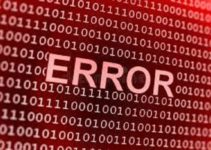The Kernel Security Check Failure error is a common Blue Screen of Death (BSOD) error encountered by Windows 10 users. This error can occur unexpectedly, leading to system crashes and potential data loss. Understanding the meaning of Kernel Security Check Failure, its underlying causes, and effective solutions is essential for resolving this issue and ensuring a stable computing experience.
In this comprehensive guide, we’ll delve into the meaning of Kernel Security Check Failure in Windows 10, explore its potential causes, and provide easy-to-follow methods to fix this error.

What is Kernel Security Check Failure in Windows 10?
Kernel Security Check Failure is a critical system error in Windows 10 that indicates a problem with the operating system’s kernel, which is the core component responsible for managing system resources and executing system processes.
When this error occurs, Windows crashes and displays a blue screen with the error message “Kernel Security Check Failure.” This error can occur during system startup, while using certain applications, or randomly during system operation.
Read Also:
Causes of Kernel Security Check Failure Windows 10 Error
Several factors can contribute to the Kernel Security Check Failure error in Windows 10:
- Corrupted System Files: Damage to critical system files, such as drivers or system DLLs, can trigger the Kernel Security Check Failure error.
- Faulty Hardware: Malfunctioning hardware components, including RAM modules, hard drives, or the CPU, can cause system instability and lead to Kernel Security Check Failure.
- Driver Issues: Outdated, incompatible, or corrupted device drivers can cause conflicts with the operating system kernel, resulting in the Kernel Security Check Failure error.
- Memory Management Errors: Issues related to memory management, such as memory leaks or page file corruption, can trigger the Kernel Security Check Failure error.
- System Overclocking: Overclocking the CPU, GPU, or RAM beyond their rated specifications can destabilize the system and lead to kernel-related errors.
- Software Conflicts: Conflicts between software applications or system utilities can interfere with the operation of the kernel and result in the Kernel Security Check Failure error.
How To Fix ‘Kernel Security Check Failure Windows 10’
If you’re getting the “Kernel Security Check Failure” stop code in Windows 10, try these solutions:
Method 1: Install the Most Recent Version of Windows 10.
To begin, we suggest installing the most recent version of Windows 10 and seeing if the BSOD error persists after the update. There are several benefits to installing updates, including the correction of faults, the addition of new and helpful features, and the closing of security loopholes. To get the latest version of Windows 10, follow these steps:
Step 1. The Start menu can be accessed by clicking the Windows symbol in the system tray (the bottom left of the screen). Select Preferences, or hit the Windows key plus I.
Step 2. Select the Tile for Updates and Security. Most of the options for configuring Windows Update and scheduling downloads of new versions can be found in this section.
Step 3. Do not navigate away from the main Windows Update screen. To have Windows 10 look for available updates, select the Check for updates option and then wait.
Step 4. If any updates are already displayed, you can view and instal them by selecting the View all optional updates link.
Step 5. When prompted, select Install to have Windows 10 download and instal the update automatically. Check if the Kernel Security Check failure error reappears after upgrading to the newest system version.
Method 2: Ensure Your Drivers Are Up to Date
When your device’s drivers are out of date, you may see the “Kernel Security Check failure” error. This tutorial will show you how to update your drivers and maybe resolve any problems that may have arisen as a result.
In this particular case, updating the driver is simply a potential band-aid for the blue screen of death. Move on to the next option if this one doesn’t help!
Step 1. Device Manager can be accessed by pressing the Windows key plus the letter X, and then selecting the appropriate option from the resulting menu.
Step 2. If you suspect that any of your drivers are out of date, expand all the subheadings and check for yourself. If a driver is having trouble, a yellow exclamation mark will appear.
Step 3. To access the driver’s properties, right-click on the driver in question and select the appropriate menu item.
Step 4. Click the Update Driver button in the Driver tab.
Step 5. Select the route you’ll take to update your driver. Windows 10 gives you the option to either automatically search for a driver online or manually search for a fresh driver file on your hard drive.
Step 6. Hold off until the driver installation is finished. If there are any other drivers giving an error message or showing signs of being out of current, update them.
Step 7. Restarting the computer is required so that the changes made by the new driver can take effect (s). To see if the BSOD error has been fixed, you should run some tests now.
Method 3: Examine Hard Drives for Problems
You may have a problem with the security of your kernel due to a malfunctioning disc. Thankfully, a built-in scanner allows for their repair. Just do as I say down here.
Step 1. Start up File Explorer by double-clicking its icon on the taskbar or pressing Ctrl + E on the keyboard.
Step 2. To access the contents of your computer, select It from the left-hand menu. Choose “Properties” from the right-click menu after selecting your system drive.
Step 3. Select the Check button under the Tools menu. It’s possible that you’ll need an administrator account in order to activate this function.
Step 4. Initiate a thorough scan of the system drive by selecting the Scan drive button. Depending on your gadget, this could last quite a while.
Step 5. Please let the scan determine whether there are any problems with your drive. In the event of an error, proceed as directed.
Read Also:

